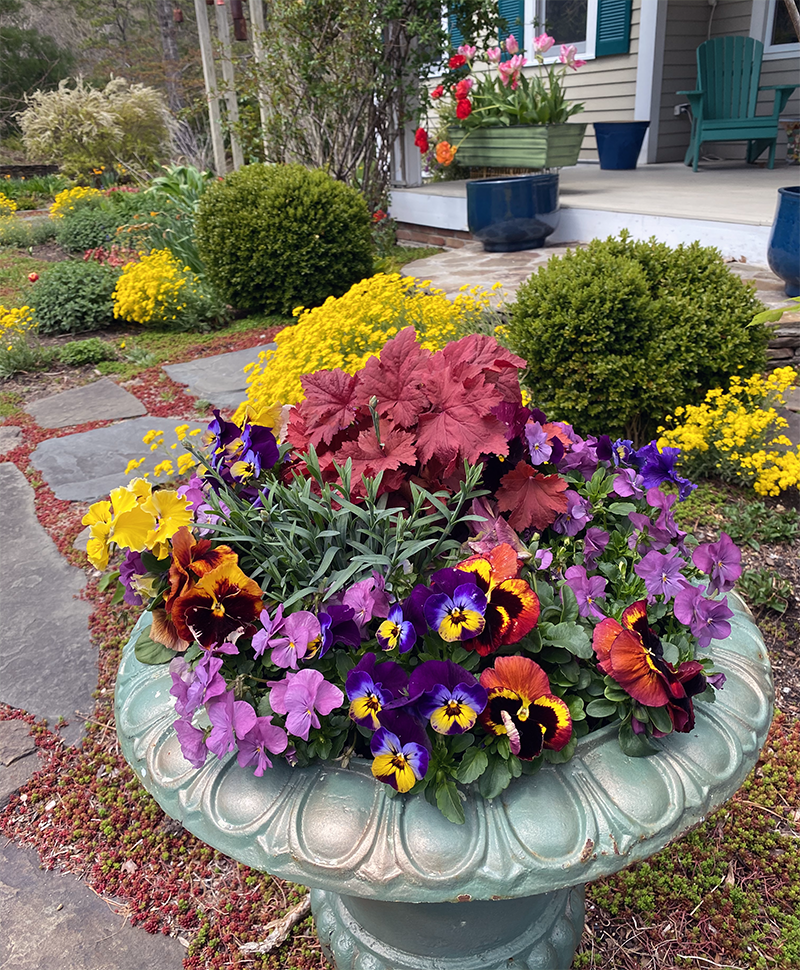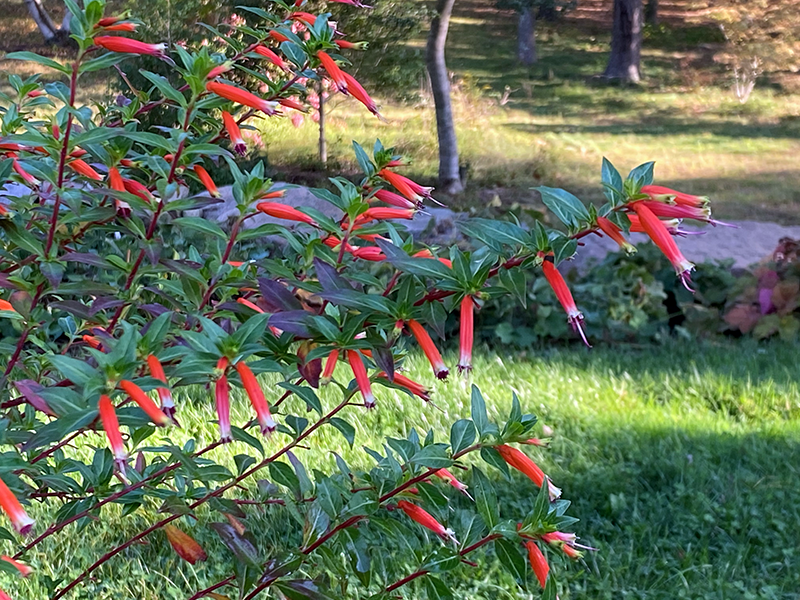Questions From the Spring Happy Hour
Questions From the Spring Happy Hour
In our April Happy Hour last night, I promised those who attended that I would answer any questions I couldn’t get to on the blog and on our Facebook page. Here are those questions, along with two photos that those attending remarked on. Note that if you want to watch the recording of this hour event, you can do so here.
From Catherine: Can I trim my boxwood shrubs now?
Yes, you can prune boxwood now, removing some of the winter-damaged foliage if that is evident. You can prune off an inch or two on most boxwood. If the plants have any dead stems, remove those completely.
From Carole Young-Kleinfeld: When can I plant seeds for Gomphocarpus Physocarpus Milkweed seeds outside?
This plant – commonly called balloon plant or hairy balls plant, isn’t actually a milkweed, although it’s similar. You can plant seeds directly in the soil at the end of April. You can also start them inside now!
From Catherine: When can I prune my rose bushes?
We commonly say, “prune roses when the Forsythia is in bloom” and that’s now! My Forsythia is ready to pop, and many of my roses have red buds now, so it’s time to prune. A few of my shrub roses don’t show those red buds yet, so I’ll wait until they break dormancy to prune them. Look at your plants and if they show red, new growth, prune them!
From Wendi: How to you plant Rudbeckia – black eyed Susans…with seeds?
Yes, you can grow all types of Rudbeckia from seed, and you are ahead of the game by starting them now, indoors. I’d urge you to start the seeds in pots if you want to start them outside in May, because it’s easier to monitor the watering and avoid weeds. Once the plants are large enough, sometime in late-June or mid-July, you can move them into the garden. Seed-started Rudbeckia may or may not bloom the first year, depending on the variety.
Another option is to buy plants that are already a year or more old. These will flower the first year in the garden. Country Garden always stocks several varieties of Rudbeckia so check in periodically to see which ones have come in.
From Linda: What about leaving leaves around plants as mulch?
You can do this, but it’s more successful around some plants and less desirable near others. Leaving them under and around Rhododendrons works very well, for example. But leaving them around some smaller perennials can be problematic because they continue to blow around and hide the plants, or even smother them.
If you have a space to pile the leaves, or contain them in a large bin, on the side or back of your yard, one method you might be interested in is making what the British gardeners call “leaf mould.” That’s when you put the leaves in a pile or bin at this time of year, and water them every couple of weeks in the summer if it doesn’t rain. Then in the fall, those leaves will be soft and partly decomposed. They are also likely to be filled with earthworms! Take the few crispy-crunchy ones off the top of that pile and use the soft ones underneath for your mulching.
From Barbara: This will be the second year of a raised bed. What do you recommend we add to the soil BEFORE planting?
First, make sure the bed is still full of soil. Many times the loam has settled and you’ll see more than 3” of the raised bed frame above the soil. If that’s the case, top it off with more loam now. Secondly, you can’t go wrong by covering the surface with an inch or two of Coast of Maine Compost, or Bumper Crop. Two or three bags of these organic amendments are perfect for raised beds. You can dig this on or leave on the top if you’re using the “no-till gardening” method.
You can also apply a light application of an organic fertilizer, such as Tomato-Tone, but you might want to send a soil sample into the University of Massachusetts Soil testing lab before you do that, so you know what the nutrient levels are now. It’s a good idea to test soils in vegetable gardens every three or four years.
From Catherine: I have a beautiful clover and moss back yard. I’ve decided to also change the small front yard to clover. When can I spread the clover seeds?
You can spread the clover seeds now. If you can, rake that front yard first, before you scatter the seeds.
From Molly: Tips for dividing and relocating heather?
Be sure to get as many roots as possible, and replant in well-drained soils in a sunny location. Do not “improve” the soil with compost, and do not fertilize heaths and heathers. Divide or transplant winter-blooming heaths right after they flower, and heathers now. And BTW – in order to keep these plants looking their best, prune them back by about 1/4 of their height right after they flower.
From Mary: Enjoying this so much! Thank you.
Thanks, Mary!
From Andrea: We have a pyrocantha that was FILLED with flowers, then FILLED with berries, and now the berries are dead and brown and so are several of the branches. Prune it way back or be judicious?
First of all, prune off all dead branches. When you do this, dip the pruners in a solution of bleach and water in between cuts. This is because Pyracantha is very prone to fire blight, a bacterial disease that there is no cure for. It causes branches to die from the top down. If this is fire blight, it will continue. If it’s just winter-damage, you should see new growth and more flowers, without dieback this summer. We hope that it’s just winter kill, but treating the pruners in between cuts is a good idea in case it is fire blight.


Subscribe To Our Newsletter
Sign up for our weekly email about sales and events.
